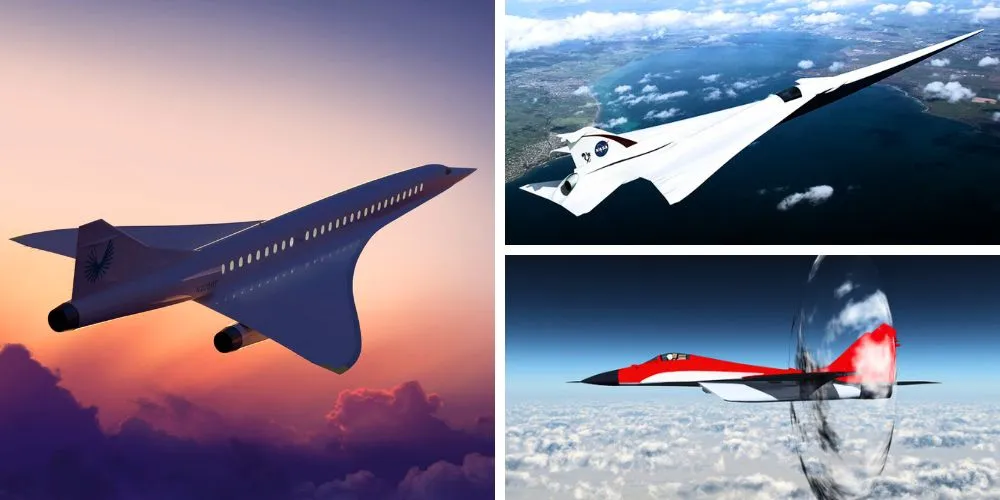In a groundbreaking advancement for aviation, the era of boom-free supersonic flight is on the horizon, promising to revolutionize air travel by drastically reducing flight times without the disruptive sonic boom. This technological leap, driven by cutting-edge aerospace engineering and innovative design, heralds a new chapter in commercial and military aviation, combining speed with environmental consciousness and community friendliness.
Supersonic flight, traveling faster than the speed of sound (Mach 1), has long been marred by the sonic boom—an explosive noise caused by shock waves created as an aircraft surpasses the speed of sound. This loud noise has restricted supersonic travel over land, limiting its practical applications.
Boom-free supersonic flight aims to mitigate this issue by employing advanced aerodynamic designs and materials that shape the shock waves, preventing them from merging into a single, powerful sonic boom. Instead, the shock waves are dispersed into multiple weaker waves, often referred to as a “low-boom” or “soft thump,” which is significantly less intrusive and more acceptable for overland flight.
Innovations in aircraft design and materials are key to achieving boom-free supersonic flight. Engineers are leveraging computational fluid dynamics (CFD) and wind tunnel testing to refine the shape of aircraft fuselages, wings, and engine nacelles. These modifications help control the propagation of shock waves, minimizing their impact on the ground.
Advanced materials, such as carbon composites, are crucial in reducing the aircraft’s weight while maintaining structural integrity at high speeds. These materials enhance fuel efficiency and contribute to the aircraft’s ability to sustain lower noise levels.
Boom-free supersonic flight can transform commercial aviation by drastically reducing travel times. Transatlantic flights, for instance, could be cut from seven hours to just over three hours, making long-distance travel more efficient and appealing. This speed advantage could revolutionize business travel, tourism, and emergency medical transportation.
Environmentally, the development of quieter supersonic jets aligns with growing concerns about noise pollution and its impact on communities. Moreover, ongoing research into sustainable aviation fuels (SAFs) and hybrid-electric propulsion systems aims to reduce the carbon footprint of supersonic aircraft, addressing concerns about their environmental impact.
Several aerospace companies and research institutions are taking charge of boom-free supersonic flight. Notable among them is NASA’s X-59 QueSST (Quiet SuperSonic Technology) project, which aims to demonstrate the feasibility of low-boom flight and gather data to inform future regulations and standards.
Commercial ventures like Boom Supersonic and Aerion Supersonic are developing next-generation supersonic jets designed for overland travel. These companies work closely with regulatory bodies to ensure their aircraft meet stringent noise and environmental standards, paving the way for widespread adoption.
As boom-free supersonic flight technology advances, it promises to redefine the boundaries of air travel. With the potential to combine speed, efficiency, and environmental responsibility, this innovation could soon make supersonic flight a common mode of transportation, bringing the world closer together and opening up new possibilities for global connectivity.












